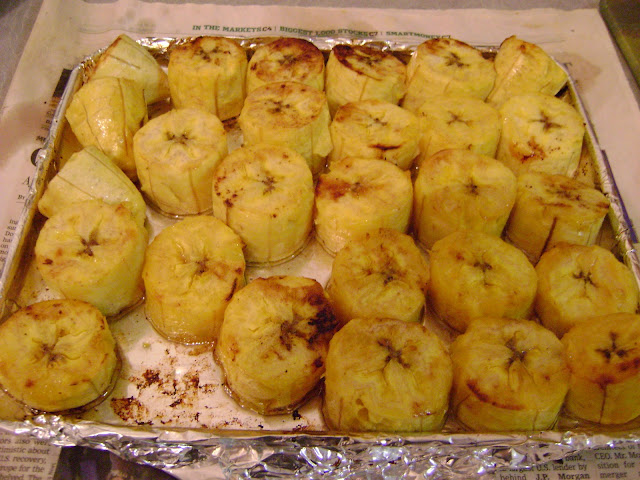
Plantains and "Hyperpalatability"
A colleague of mine mentioned plaintains being an important food source in the Caribbean. So I decided to try eating them for a while. Unfortunately, that would mean ingesting some sugar: about 28 grams of sugar per 200g of serving. These are copious amounts of sugar for me. In 2011, my sugar intake was 15-20g per day, all from vegetables and occasional berries. Nonetheless, I'm pretty lean now and I never tasted plantains before. So chalk one up for biohacking.
Wow, what results is a whole-food dessert that makes portion control next to impossible! For the next two weeks, I could not stop baking and eating them like hotcakes. I would bake 4 large plantains and finish them in one sitting. I don't know any other food source whose portions I cannot control like this. Never did I think that a "whole food" could be as "hyperpalatable" as manufactured products like sodas and candies.
Regrettably, I had to eliminate them from my diet. Although there is no added sugar, there is simply too much "endogenous" sugar upon caramelization. And I don't have a good track record of pushing away from the table when it comes to sugar. I'm glad I got around to tasting them, however. There is no "hype" when it comes to plantains; they're simply too tasty and too palatable. Hyperpalatable.
I first tried those plantains that hadn't ripened yet. These greenish plantains are sold separate from the yellow ones.
I tried boiling them first. They tasted like starchy potatoes or taro and I sensed no sweetness at all. Then I baked them in my electric oven at 350F on each side, using coconut oil for lubrication. Again, no sweetness and I actually had to sprinkle salt to make them appetizing. Not impressed: what's the point, I wondered? Why not eat yuca and avoid the sugar, which I couldn't detect anyway. Why pay for fructose when you can't taste it and the stuff isn't half as palatable as yuca or batata or yams?
Then I bought some yellow plantains. I left them on my window sill to make them go ripe. These were soon gaining dark streaks and seemed to be spoiling quickly, so I decided to bake them.
This time, I used Kerrygold butter, which is the only form of dairy I consume at the moment. I was very surprised to find that they're available at ShopRite.
Recently, I've been putting a tablespoon of Kerrygold butter in my coffee and the result has been nothing short of spectacular: healthier than the ultra-pasteurized heavy cream and guar-gum filled coconut milk. Stronger, too. Now I know why the Sherpas of Nepal drink tea made from yak butter.
 |
| Kerrygold butter melting in my coffee. |
Using a baking pan, I put the sliced plantains and placed small chunks of Kerrygold butter at strategic locations: 375F on one side for 20 minutes and then flip and rotate for 25-30 minutes. Except I overdid it and some of the twice-baked plaintains became charred.
I tried again the next day and succeeded in turning them bright golden. Well, sort of. Maybe a little undone this time but the problem seems to be the uneven heating inside my oven.
These plantains tasted completely different. They were incredibly sweet and I could tell that the sugar had caramelized. Now I know why they are prized in the Caribbean: they taste like bananas but are less overtly sweet than the really ripe banana. What you taste is the sugar that oozed out during the 50-minute baking process. Those who've tasted fried parsnips know how different the parsnips taste when fried (vs. raw or boiled). Try mixing sugar with butter in a frying pan and taste the sugar as it turns brown when heated at 320F or above.
Perhaps the sweetness should be balanced by some sour taste. So I mix some frozen cranberries, which go well with anything overwhelmingly sweet.
Wow, what results is a whole-food dessert that makes portion control next to impossible! For the next two weeks, I could not stop baking and eating them like hotcakes. I would bake 4 large plantains and finish them in one sitting. I don't know any other food source whose portions I cannot control like this. Never did I think that a "whole food" could be as "hyperpalatable" as manufactured products like sodas and candies.
















